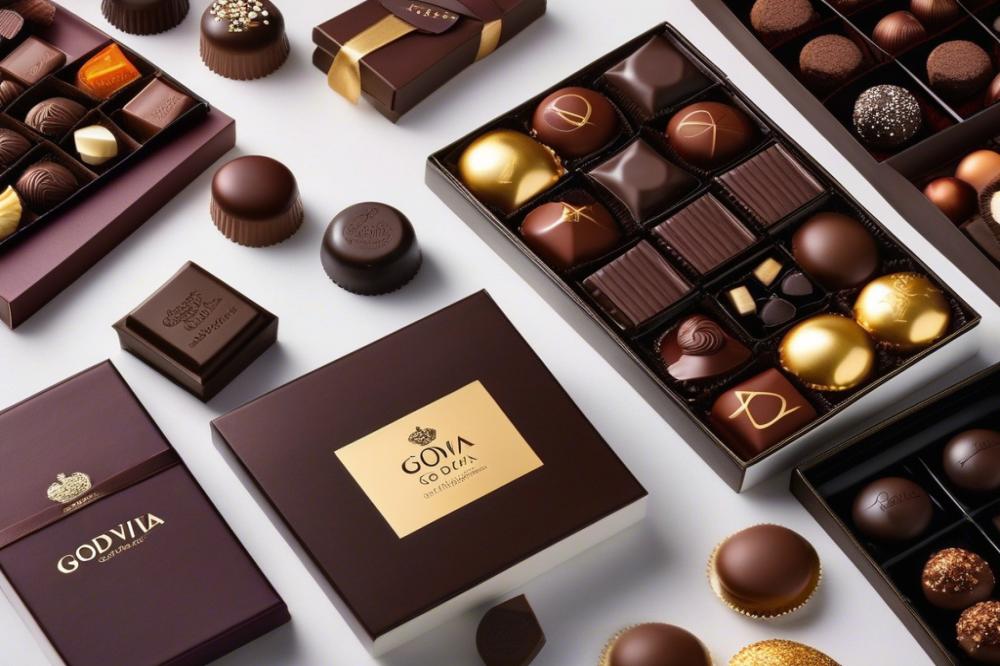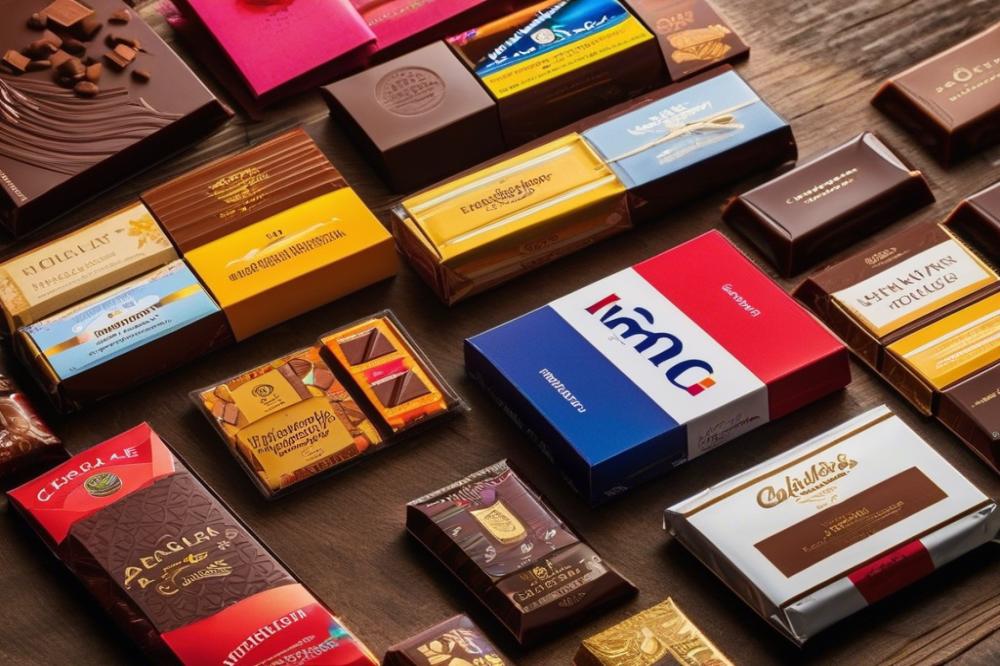Introduction
Twix is a beloved chocolate bar that has captured the hearts of many candy lovers around the world. With its combination of crunchy biscuit, smooth caramel, and rich chocolate coating, it offers a delightful treat for any occasion. Despite its widespread popularity, something intriguing has emerged among fans: the #left vs. right debate# regarding Twix. This discussion revolves around which side of the bar is superior: the left or the right. The lively arguments and preferences surrounding this chocolate bar have sparked fascination beyond simple snack choices.
In popular culture, this debate holds more significance than one might initially think. It has led to heated conversations and playful rivalries among friends and family. Moreover, social media has amplified these discussions, creating a platform where fans can express their opinions or even share comedic memes. Such engagement reflects how deeply ingrained Twix is in our collective experience. Through this exploration, we aim to uncover the reasons why this debate resonates so strongly with chocolate enthusiasts everywhere.
As you journey through the different perspectives, look out for emerging patterns in preferences. You might discover that personal stories and nostalgic moments often play a role in why someone favors a particular side. Whether you’re a loyal left Twix fan or a staunch supporter of the right, this debate is an interesting window into the world of candy preferences. Stay tuned as we delve deeper into the fascinating realm of Twix and its ongoing rivalry!
For a closer look at this cultural phenomenon, let’s examine the history and marketing of the chocolate bar. Understanding its background might just shed light on why these discussions have gained such momentum. The twist in the tale may come from marketing strategies that influence our perceptions and choices—something that many might overlook.
The Origins of Twix

The creation of Twix began in the late 1960s in the United Kingdom. A small team at Mars, Incorporated was looking to develop a new candy bar. They wanted something that combined chocolate, caramel, and a biscuit base. After several trials, they finalized their recipe and design by 1967.
Initially, Twix was introduced as “Raider” in some European markets. Marketing strategies revolved around highlighting its distinct combination of flavors. Advertisements focused on how it was different from other bars on the market. Engaging slogans and appealing packaging helped capture consumer attention. In 1979, the brand was rebranded to “Twix” for global consistency.
Twix has seen several variations in different countries. For instance, in some regions, it’s offered with a peanut butter filling instead of traditional caramel. Japan has unique flavors, such as matcha and other local ingredients. Seasonal editions, like pumpkin spice for autumn, also keep the product fresh in consumers’ minds. These adaptations cater to local tastes, making it a versatile choice in the candy aisle.
The Great Left vs. Right Debate

The debate surrounding Twix bars primarily centers on two divisions: the left version and the right version. Fans of each side are often quite passionate about their choice. At its core, this argument touches upon personal preference and the cultural significance of something as simple as a candy bar. How did it all start? It seems to have evolved from casual conversations about flavor and enjoyment.
Packaging plays a significant role in this disagreement. The wrappers are identical, yet the imagery and the way people perceive them can differ. A Twix bar typically contains caramel, cookie, and chocolate. However, fans argue that the left side has a slight edge in taste due to the way the ingredients are layered. Small differences in composition can lead to big variations in flavor perception. People claim a specific side simply hits the sweet spot better.
Public opinion has skyrocketed on social media platforms. Many individuals share their preferences in posts, images, and even polls. When a humorous tweet or meme goes viral, it can tilt the debate one way or another. Influencers and brands interact with this topic, enhancing the discussion even more. Arguments can become quite heated among fans, making it a lively subject for casual conversations and debates online.
Cultural factors also influence how people align themselves in this disagreement. Regional taste preferences can lead to different opinions on the Twix split. People from certain areas might favor the left, while others steadfastly defend the right. These preferences stem not only from flavor but also from individual experiences and memories related to the treat.
The combination of passionate opinions, social media hype, and marketing has made the left vs. right debate a fun and ongoing conversation among candy lovers. Exploring this lighthearted yet intriguing topic can reveal much about how food preferences can spark fierce loyalty. The age-old question: left or right? It seems like it might not have a definitive answer, and that’s alright.
Cultural Impact of Twix
Twix in Advertising and Popular Media
Advertising campaigns featuring Twix have left a mark on how the candy bar is perceived. From catchy jingles to humorous skits, these ads often highlight the left and right sides of the bar. With memorable slogans, the brand successfully connects with a diverse audience. Over the years, commercials have shown how both halves can deliver satisfaction. Through creative storytelling, Twix has built a narrative that appeals to both children and adults alike. Many remember the clever presentations of the product more than the actual candy.
Role in Pop Culture References and Memes
Twix has become a symbol in various pop culture references. As memes flood social media, the debate about left versus right has found its place online. People often use the candy to express their preferences and engage in humorous discussions. This lighthearted rivalry has ignited countless conversations across platforms like Twitter and Instagram. The playful nature of these memes allows fans to unite, regardless of which side they support. By associating the candy with common experiences, Twix has woven itself into the social fabric.
Influence on Consumer Choice and Brand Loyalty
Brand loyalty can be strong when it comes to Twix. Many consumers have strong attachments to either the left or right side of the bar. This attachment often affects their choices in stores. Individuals may go out of their way to find the flavor they favor. Twix encourages people to identify with one side, inadvertently promoting a sense of community among fans. By engaging consumers in playful debates, they strengthen their bond to the brand. The candy not only satisfies cravings but also offers a sense of belonging to those who enjoy it.
Global Variations of Twix
Twix is known for its delicious combination of a crunchy cookie, caramel, and chocolate. However, this treat comes in many variations around the world. Each country often introduces its distinct flavors or styles. These adaptations cater to local tastes and preferences.
In the United States, the classic Twix features the original chocolate-covered caramel. Meanwhile, in Japan, unique versions like Matcha Twix or Wasabi Twix appear. These flavors reflect the local culture’s love for matcha and adventurous eating. Some regions even create special editions for holidays or festivals.
Examining European markets, it’s interesting to note that flavors vary significantly. For example, in the UK, the Twix Biscuit version presents a fluffier texture. This presents a softer bite that contrasts with the original, but still delights fans. Across the continent, various limited editions frequently pop up, often featuring local ingredients.
When comparing local and international selections, differences in size and packaging emerge too. In many countries, Twix bars may come in larger formats or multi-pack options. This contrasts with the standard individual packaging widely found elsewhere. Some nations even offer bite-sized pieces, allowing for a fun sharing experience.
Flavor profiles may also change according to regional preferences. While caramel and chocolate remain staples, countries often add ingredients that resonate with their populations. Think about how salty snacks find their way into desserts in some places. Twix has certainly capitalized on these trends.
International travelers often enjoy seeking out these different takes on a familiar favorite. Finding a unique Twix flavor can be an exciting part of a journey. It teaches a lot about each culture’s palate and creative approaches to candy-making.
The Future of Twix and the Debate
Trends in Chocolate Bar Manufacturing and Marketing
Changes in chocolate bar production are shaping the market. Many companies are focusing on sustainability. This includes using eco-friendly packaging and ethically sourced ingredients. Consumers are also drawn to brands that offer transparency in their practices. Marketing strategies now emphasize storytelling. People want to feel connected to their favorite snacks. Creative advertising campaigns often feature engaging themes and social media interactions. Innovations in flavors and textures keep the experience exciting. Brands experiment with limited-time offerings to create buzz.
Predictions for How the Left vs. Right Debate Might Evolve
Anticipating the future of the left vs. right debate about Twix requires some thought. Discussions may shift as consumer preferences change over time. People might become more vocal about their preferences. Engaging in lively debates could become a norm for snack enthusiasts. The polarization may also lead to collaborations between brands. Joint marketing efforts could attract diverse audiences. As the conversation continues, new voices will emerge. Fresh campaigns could champion inclusivity and engagement, reflecting changing social norms.
Importance of Consumer Feedback and Engagement
Consumer feedback plays a critical role in shaping product lines. Brands that listen to their customers can adapt offerings based on preferences. Surveys and social media interactions provide valuable insights. Engaging with followers fosters a sense of community around products. Enthusiastic product testers can guide companies in refining their recipes. Transparency in communication builds trust with consumers. Brands that prioritize this relationship often see lasting loyalty. By paying attention to feedback, businesses can stay relevant in a competitive market.
Final Thoughts on the Twix Debate
Twix holds a significant place in the world of chocolate bars. It is not just a treat; it’s a part of many people’s lives. With its combination of caramel, cookie, and chocolate, it offers a delicious experience. Consumers around the globe have their preferences, and this divide between left and right Twix seems to enhance its charm. Branding has cleverly turned a simple choice into a cultural phenomenon.
The left vs. right debate speaks to more than just taste. It reflects how people enjoy engaging with their food. This playful competition keeps the conversation alive. It raises questions about choices and personal preferences, which can be seen as an extension of how individuals see the world. chocolate bars have the power to spark interesting discussions, even when they come in pairs.
The enduring popularity of Twix is impressive. Many snack lovers still choose these bars for their satisfying crunch and rich flavor. Whether you adore the left or right side, the brand’s ability to engage customers keeps it relevant in our snack aisles. #anchor_text_3# perfectly encapsulates this phenomenon. Over the years, Twix has managed to stay in the spotlight, with creative marketing strategies that appeal to various generations.
Ultimately, this debate taps into something bigger. It showcases how something as simple as a chocolate bar can bring people together or fuel friendly rivalries. All in all, the love for Twix remains strong. #anchor_text_4# underlines the brand’s special appeal. No matter which side you prefer, it’s clear that Twix will remain a beloved treat for years to come.



